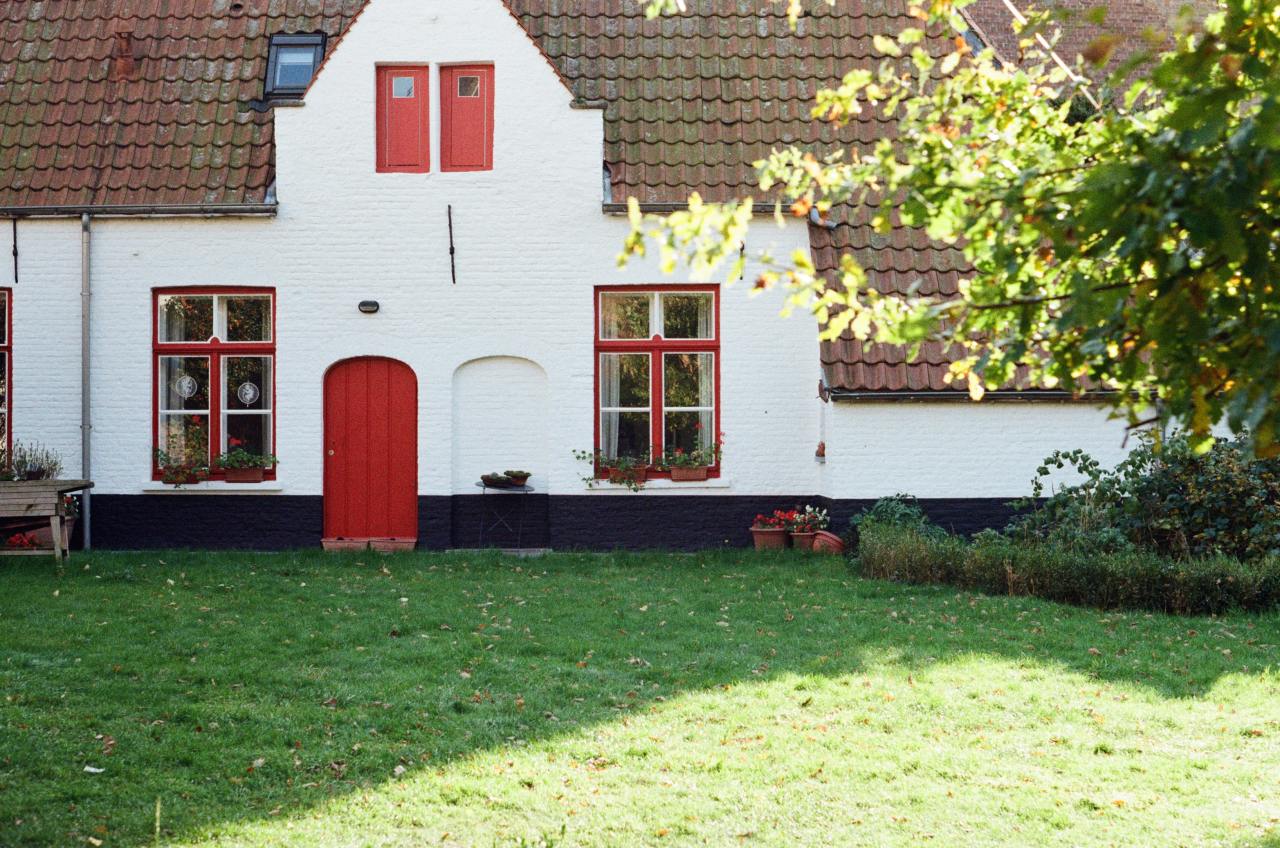How To Build An In-Law Suite: Resources, Inspiration, DIY Guide
The term comes from wanting to build a separate space for your parents or in-laws to live with you.
When a parent or grandparent enters a certain point of their life during which they require round-the-clock care, or simply do not want to spend the last years of their lives living alone, family members — typically children — will welcome them into their own homes.
This is common in other countries, where it is typical to see multiple generations living under one roof, but it’s not as common in the West, which is why in-law suites are popular.
Welcoming a family member into your home is not a small task. It can be an inconvenience and frustrating for both parties, who want to maintain at least some degree of autonomy and privacy. That’s where in-law suites come in. The term comes from wanting to build a separate space for your parents or in-laws to live with you. Though they certainly do not just have to house your spouse’s parents, individual spaces for others who live with you will fall under this umbrella term.
What Is An In-Law Suite?
An in-law suite is a space that is either attached or next to your home in which you can have a separate, private space for your parents or grandparents to live. Typically, they are made from garages, basements, sheds or attics that are converted to be more livable.
The benefit of an in-law suite is that it allows for those individuals to live in a separate space that has living, bathing and cooking quarters, and typically also has a separate entrance. This allows you to be close and connected to your loved one, while still giving them the autonomy and space they’d like while preserving yours as well.
Todd Nelson, a business developer at Light Stream, told realtor.com that “many seniors want to retain their independence but live in a more age-friendly environment.” He went onto say that he estimates in-law suites to initially cost between $40,000 to $125,000, and while that might seem like a lot upfront, it can potentially save families a lot more money long-term. However, others estimate that the addition of an in-law suite — depending on what you install — can cost as little as $10,000.
This might be true, but you can reduce those costs by first assessing your own family’s needs, and deciding what you do and do not need to install.
Building Onto An Existing Home vs. Starting From Scratch
The first, and most important, aspect of an in-law suite that you will need to determine is whether or not you can build your in-law suite into your preexisting home, or if you will need to actually build an entirely separate space — or addition — where your loved one will reside.
You can do the latter a few ways. First, you can actually build a separate guest house, or carriage house, fully equipped with whatever your loved one would need to be comfortable. This option allows for the most privacy, as they would still be nearby and on your property, but have their own space, and be able to come and go as they please. This option is best for those who still have a high degree of autonomy, and do not require a lot of hands-on caretaking.
In addition, this is likely the most cost-efficient way to add on an in-law suite to your home. A survey from the National Association of Realtors found that about 20 percent of buyers are willing to pay more for a property if a detached in-law suite is on it.
To do this, you would either need to hire someone to erect the entire structure of the building, which would include gas, water and electric lines, or you could do it yourself, provided that you or someone you know has enough experience building a home from the bottom up. It’s important to enlist professional guidance for something this elaborate, as it could pose potential health and safety hazards if you do not. In addition, you will need to research your area’s permit codes to see whether or not you need one for the construction.
If you do decide to build a completely new, detached in-law suite on your property, it is easy to assume that your costs could near the upper end of the $40,000 to $125,000 estimate.
Given that this is not always within a reasonable budget for many families, some opt to convert part of their home to an in-law quarters and save money by utilizing a space they already have like the basement, attic or spare room. Often, they will install a kitchenette, bathroom, separate door, or all of the above. Ultimately, it will be about assessing the amount of space you have to work with, as well as your particular loved one’s needs.
Assess Your Needs
Next, you will need to determine the unique needs of your family member as well as your home. For instance, does your family member require hands-on caretaking? If so, you might need your in-law suite to be a room close to the center of your home. Is your family member able to cook on their own? If not, you can save yourself thousands by not installing a kitchen that won’t get used. Do they need their own bathroom? If so, do they need special installments to help them navigate the space? There’s a lot to think about, so here are the main elements to evaluate:
Separate Entrance
One of the main benefits of an in-law suite is that it often provides a separate entrance to the home. This might be important if your loved one would like the ability to come and go as they please without disturbing the rest of the family.
If your loved one is of mixed ability, you might need to install a ramp on their own entrance. However, if they are not able to come and go on their own, or do not deem their own door important or necessary, you can easily forego it. This makes building an in-law suite in your attic or basement that much easier.
Kitchenette
Another important element of an in-law suite is a kitchen or kitchenette. Doing this allows your loved one to cook and prepare food on their own, without having to utilize your kitchen, interrupt your cooking time and space, and can even store their food separately as well.
If you want to install a kitchenette in your in-law suite, you must first secure both a gas (for a gas range top) and water line to the area of the room where you want the items to be. Then you will need proper ventilation, if you’re installing a stove. Most of the time, a small cabinet, refrigerator, sink, faucet and stove top will suffice for basic cooking for one or two people. These items are not terribly expensive on their own, but, added together, it might be one of the more costly elements of your installation.
Kitchen Sink
This single basin drop in is the perfect addition to an in-law suite. It’s small enough so as to not take up too much countertop space, but still provides function and utility.
This sink is great for the in-law that is still very active in the kitchen, or might require a larger basin for washing household items, pets, etc. The stainless steel finish makes it timeless and easy to care for, while the separate basins offer more functionality than a smaller option.
Faucet
This all-in-one faucet combines the nozzle and temperature valves, making it great for a smaller kitchen. However, the embossing and beveling still gives it a more traditional appearance, which is perfect for family members who prefer that style.
Similar to the prior faucet, this option is sleek and minimalistic, while still saving space and getting the job done.
Bathroom
One of the most preferred items in an in-law suite is a separate and private bathroom. If you have to choose between a bathroom and a kitchen or kitchenette, a bathroom is probably the most important thing to have. This allows your loved one to use the bathroom at their leisure, to take as much time as they need, and to reduce or eliminate interruptions.
In this case, you might need to install a comfort height toilet, a shower seat, a detachable shower head, grab bars, toilets that feature a bidet, or other elements that make the bathroom accessible for them. The beauty of having their own bathroom is that you can do this without disrupting your own bathroom layout or design.
This comfort height toilet might be the right choice for your in-law suite. These toilets were designed with the needs of those who are handicapped or have limited mobility. This is a great option if you are concerned with your loved one using the bathroom on their own, or being able to get up from the toilet themselves.
This is another comfort height toilet that would be ideal for a loved one of limited mobilities, but with a more streamlined and sleek design. The seat is elongated, making it more comfortable for some, and has a shorter stature.
Accessibility Options
If you have a loved one with limited mobility, you will also need to consider the options you have to install either in your home or in their quarters to make it possible for them to enter and exit the home (if they are in a wheelchair, or require some other assistance to move) shower and bathe (if they cannot stand or it would not be safe for them to stand for a longer period of time in a wet tub) or require handles and other assistance to make everyday tasks, such as ascending stairs or getting out of bed, easier for them.
Whether you build independent quarters or convert part of your home will not matter for this particular aspect of your renovation. Whether your loved one is occupying a room in your home or their own separate space, ensuring that they are able to function will be absolutely essential not only to their overall comfort and livability but their health outcomes as well.
Permits And Codes
When you’re doing extensive renovations, you should research whether or not you need a permit to do so. Nolo.com reports that the following typically requires a permit:
- Adding or removing walls.
- Changing the use of a room (converting)
- Changing piping in home
- Changing roof of home
- Demolishing part of home
The following typically does not require permits:
- Repainting home
- Adding or replacing cabinets
- Replacing appliances
- Paving driveway
- Installing new flooring
- Small fencing
Long-Term Value & Alternative Options
Though it might seem like a lot of money initially, adding in-law quarters might pay off. It ultimately increases the value of your home, and just having more bathrooms or another kitchen will likely increase your property value as well. This is in addition to the money you will save by not having to pay for at-home care or a specialized care community for your loved one.
If a full suite is still not within your budget or ability, adding a partial suite or living quarters can achieve what you want without the cost or work requirements. This can mean installing one or more parts of the traditional in-law suite, and foregoing other elements. This, of course, is a matter of preference and evaluating your own family’s needs. Regardless, it’s all about what works for you and those you share your home with.
If you still require a detached space but don’t have the extensive budget to build an entirely new structure from scratch, there are still options you can look into:
Garden Cabins
These beautiful, small cabins are typically sold by companies such as Leisure Buildings at cost; meaning, that you purchase the model you want, and you’re sent all of the materials you need, already pre-measured and cut. You can opt to have the cabin built by a professional, or you can do it yourself.
This is a great option because it’s significantly more cost-effective, but still provides an entirely separate space for your loved one. You can also customize the space as you’re building it, allowing for items like comfort height toilets, assistance handles, phones, or buttons to be installed. You can also customize the design, making it feel more personal and tailored to your loved one.
Tiny Houses
Similar to the garden cabin concept, a lot of tiny houses can either be pre-purchased, or the materials can be purchased as a pre-designed set that is installed on-site either by you or the company that you bought it from. It’s also possible to build it yourself. This is a great option because it allows you to create an entirely separate space for a fraction of the cost, one that will also still fit within the confines of your property.
In addition, tiny houses can very often be made mobile. This means that you can transport the home if and when you move. Though this might not mean much for your home’s resale value, it might be helpful if your loved one needs to move with you, and you don’t want to deal with the struggle of trying to find a new home that already has an in-law suite or having to build another one entirely.
In addition, after your loved one is finished using the tiny home, you can easily sell it or repurpose it for another family member or vacation home. With the tiny home trend surging, it would be a great time to invest.





